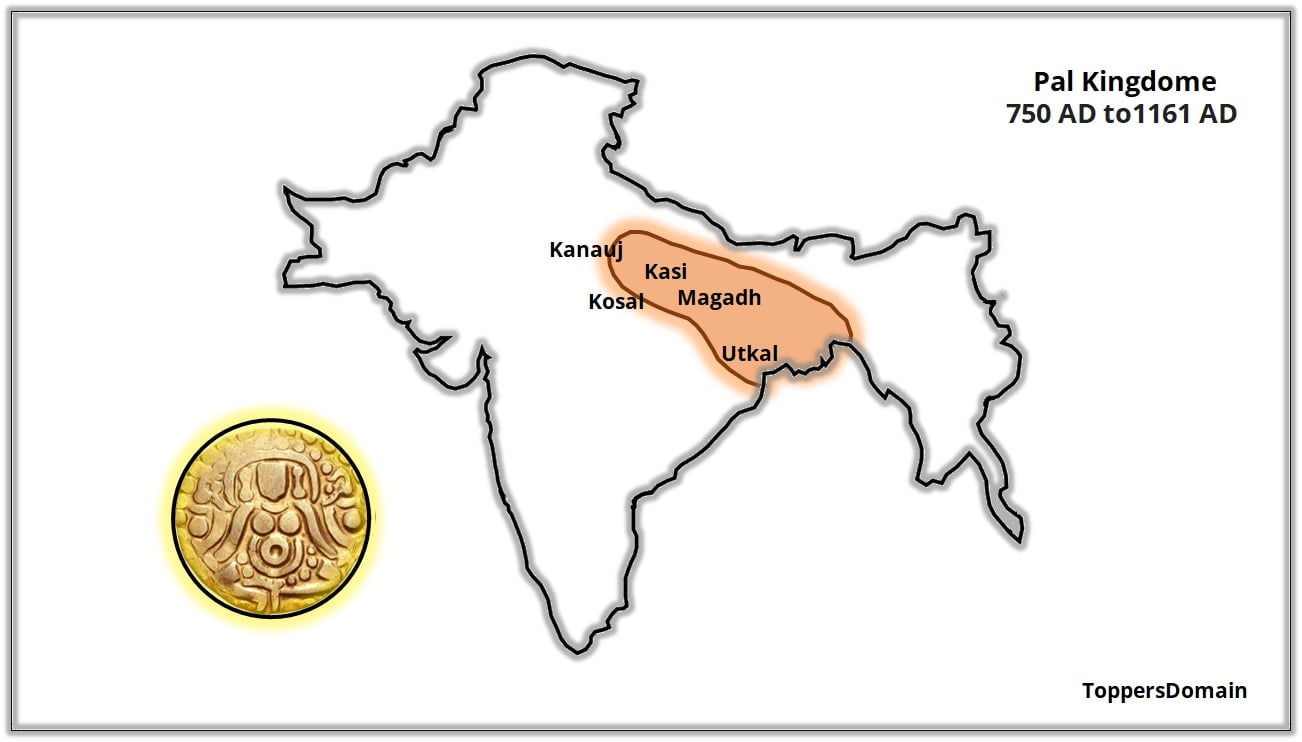Pala
History
- Language
Index
The Pala Kingdom, spanning from the 8th to the 12th century, holds a significant place in the history of the Indian subcontinent. With its capital at Pataliputra (modern-day Patna) and centered in the Bengal region, the Pala Kingdom exerted its influence over a vast territory, including present-day Bangladesh and parts of Bihar, Jharkhand, West Bengal, and Odisha. In this article, we will explore the rich tapestry of the Pala Kingdom, from its administration and governance to its cultural contributions, and delve into the lives of the prominent Pala rulers who shaped its destiny.
Introduction
The Pala Kingdom, a powerful political entity during its time, was renowned for its strong centralized administration. The rulers of the Pala dynasty, adherents of Buddhism, championed the cause of this religion, leaving an indelible mark on the region's polity, culture, and economy.
Prominent Pala Rulers
Several noteworthy Pala rulers left an indelible mark on the kingdom's history. Gopala, the founder of the Pala dynasty, established a strong and prosperous kingdom in Bengal, showcasing his administrative prowess and his commitment to promoting Buddhism. Dharmapala, another renowned ruler, expanded the Pala empire beyond Bengal, actively patronizing Buddhism and constructing numerous monasteries. Devapala, one of the most powerful Pala rulers, witnessed the zenith of the Pala dynasty, with his empire extending from Bengal to Bihar, Odisha, and parts of northern India. Mahipala I, known for his military prowess, further strengthened the Pala empire through successful campaigns against neighboring kingdoms. Mahipala II, despite facing challenges, managed to maintain stability within the kingdom during his reign.
Administration and Governance
At the heart of the Pala Kingdom's success lay its highly organized administrative system. The kingdom was divided into smaller units known as Bhuktis, each governed by provincial officials. The king, as the ultimate authority, was assisted by ministers and councillors, ensuring a sense of governance and justice within the kingdom.
Religion and Culture
Buddhism played a central role in the Pala Kingdom's religious and cultural landscape. The rulers, staunch Buddhists themselves, patronized this faith and fostered an environment of religious harmony. The Pala dynasty witnessed the rise of renowned Buddhist centers of learning, notably Vikramashila, attracting scholars and students from various parts of Asia. These institutions became instrumental in the spread of Buddhist philosophy and knowledge.
Art, Literature, and Architecture
The Pala period is often referred to as the "Golden Age of Bengal" due to the significant advancements in art, literature, and architecture witnessed during this era. Sculptures, particularly those depicting Buddhist deities, were crafted with exceptional skill and intricacy. The literature of this period flourished in both Sanskrit and regional languages, with the Pala rulers providing patronage to poets and scholars, contributing to the growth of literature.
Economy and Trade
The Pala Kingdom's economy primarily revolved around agriculture, with the fertile lands of Bengal irrigated by the Ganges and its tributaries supporting a thriving agricultural sector. The Pala rulers implemented policies to enhance agriculture, including the construction of irrigation canals and tanks. Additionally, the kingdom's proximity to the Bay of Bengal facilitated trade and commerce. The port cities of Tamralipta and Vikrampura served as vital centers for regional and international trade, connecting the Pala Kingdom to Southeast Asia, China, and the Middle East. The Pala rulers actively encouraged trade and provided protection to merchants, contributing to the growth of commerce.
Decline of the Pala Kingdom
The decline of the Pala Kingdom began in the 11th century, marked by invasions from the Chola dynasty of South India and the emergence of regional powers. The weakening of the central authority led to the disintegration of the kingdom, with various local rulers asserting their independence.
Legacy of the Pala Kingdom
Despite its eventual decline, the Pala Kingdom left an enduring legacy in the history and culture of the Indian subcontinent. Its patronage of Buddhism, contributions to art and literature, and advancements in governance and administration played a significant role in shaping the region's history. The Pala period remains an important chapter in the rich tapestry of India's past, showcasing the intellectual and cultural vibrancy of the time.
Conclusion :
The Pala Kingdom stands as a testament to the achievements and contributions of the Pala dynasty. From their well-organized administrative system to their promotion of Buddhism, the Pala rulers played a vital role in shaping the history and culture of ancient India. Through their patronage of art, literature, and architecture, they left behind a legacy that endured for centuries.
Share
Other Topics
Unit - V


